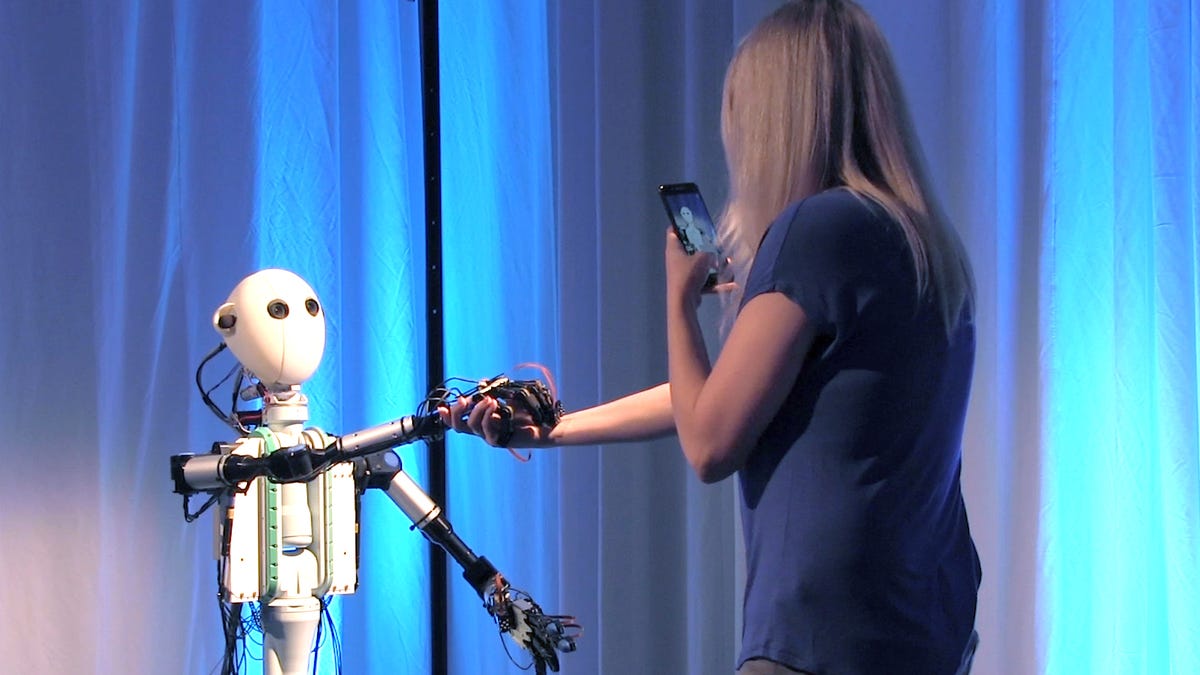Welcome your new robot overlords: humans
There's a new XPrize on the horizon, and its goal is to offer us control of high-functioning robots all around the world.

I became a robot .
For a whopping 5 minutes, but still. It was really awesome.
We've seen many iterations of what roboticists call "telexistence" in sci-fi movies and TV shows -- it's when a human inhabits a non-human entity that's existing elsewhere, whether it's a few feet away or halfway around the globe. Japanese airline All Nippon Airways (ANA) is partnering up with XPrize to create a competition it hopes will use this tech to jumpstart development on a real-life general purpose robot avatar.
Approximately 4.3 billion people worldwide still don't have access to the internet, according to a study by World Economic Forum released this past April. Many of these locations are remote or poverty-stricken, and sometimes both. The goal of the ANA Avatar XPrize is to create a robot that can be inhabited by a person with specific expertise a rural village might be in need of (a doctor, an architect, a teacher, etc.). The expert can then hook into the robot via telexistence and provide education, diagnoses or other information as if they were actually present.
It's an immensely ambitious idea; so how does the scientific community incentivize its brethren to work toward making it a reality? XPrize is trying out one solution: cold, hard cash...and lots of it.
You might have heard of XPrize before; in fact, our own Tim Stevens has been following the Google Lunar XPrize for the past two years (a competition for nongovernment entities to land a rover on the moon with a $30M prize). If you're not familiar with the organization, XPrize competitions are often massive undertakings spanning many areas of expertise. An XPrize must be "a bold and audacious goal" that's winnable by a small team, offers vision and hope to audiences worldwide and is achievable within approximately 2-7 years time.
So what does the ANA Avatar Xprize competition consist of? Teams will work on their concepts for the next 3 years, and will need to pass a qualifying round (requiring a demonstration of the ability to control an avatar) in 2020. The top 5 teams will split a $3M purse, and move on to the "Annual Avatar Games," a televised live event showcasing 5 challenges for each team to complete:
- Assist: An avatar must prepare a perfect 5-ingredient omelette
- Rescue: An avatar must travel to a disaster and provide expert medical care
- Compete: An avatar must play (and win) against a semi-professional tennis player
- Present: An avatar must complete a presentation and mingle with the crowd afterwards
- Perform: An avatar must show musical expertise by playing a set of songs on stage
If a team's robot can complete all 5 challenges, they win $15M and a general purpose avatar will be born. Sounds easy, right?
If my time at the Avatar Xprize presentation was any indication, many of the puzzle pieces exist to actually make this happen. I was given the opportunity to take control of Telesar V, a telexistence robot in earlier stages of development, and the entire experience was surreal (and also really, really cool). I had a headset that let me see through Telesar V's eyes, gloves with haptic feedback that squeezed my fingertips when someone grabbed Telesar V's hands and a vest to track my torso movement and relay it to the robot. It wasn't quite the same as, say, going to "The Matrix," but it was definitely something. Other exhibits included VR and an eerily lifelike robot named U. However, controlling Telesar V was, to me, the true highlight of the day.
There are a lot of hurdles to clear in creating what would be considered a general purpose avatar for humans to inhabit remotely (scale, cost and agility are three major challenges alone). But the benefits would be widespread, particularly in rural and remote areas where experts in science, medicine and other fields are scarce -- or disaster-ravaged locations deemed too dangerous for humans.
The ANA Avatar Xprize was voted a top prize concept by Xprize visioneers recently, so we'll be hearing and seeing more in the future as teams gear up to compete and the actual contest starts heating up.
So hopefully, just maybe, you'll get to be a robot someday, too.

